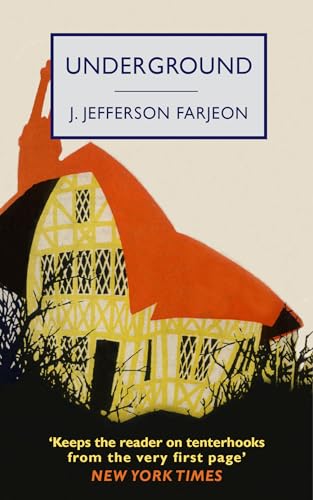
‘A pleasure’ The Daily Telegraph‘Not a dull moment in it’ New York TimesThe much-revered crime writer J. Jefferson Farjeon’s mystery back in print for the first time in almost a centuryBy the author of the bestselling Mystery in White‘J. Jefferson Farjeon is quite unsurpassed for creepy skill in mysterious adventures’ Dorothy L. Sayers Perched up high on the edge of cliffs on Byford Moor, Northumberland, Coomber House was a desolate place. Strange sounds reverberated through its empty rooms and hallways; was it the booming of breaking waves crashing against the rocks below, or ghostly echoes from the old mine workings? Such is the setting for this puzzling country house mystery. But our story begins in London, three hundred miles south of the moor in a King’s Cross restaurant. Lowly clerk, Mr Brown is minding his own business when he overhears two men plotting to kidnap a Miss Joscelyn Marlowe. She is sitting a few tables away… ABOUT THE AUTHOR Joseph Jefferson Farjeon was born into a literary family in Hampstead, north west London in 1883. He was a prolific crime writer, writing over sixty novels over the course of thirty years, many published by William Collins & Sons and featuring in their hugely popular Collins Crime Club. Dorothy L. Sayers said of his work, ‘every word is entertaining.’ His best-known novel (and play) Number 17, was made into a film by Alfred Hitchcock. He died in 1955. PRAISE FOR J. JEFFERSON FARJEON Uninvited Guests ‘An ingenious country house mystery… absorbing’ New York Times The Master Criminal ‘A Sherlock Holmes novel of the first degree’ New York Post The ‘Z’ Murders ‘A classic serial killer mystery’ Martin Edwards Mystery in White ‘The perfect book for a winter's evening, a cosy chair and an open fire’ The Daily Mail Thirteen Guests ‘A country house mystery story firmly in the tradition of the “Golden Age of murder”… lively entertainment as well as a teasingly constructed mystery’ Martin Edwards No 17 ‘Works its way up by delicate graduations of horror to a climatic explosion of gun-play, diamonds and false identities, leaving the criminals safe in the hands of Scotland Yard’ New York Times
Author

Joseph Jefferson Farjeon was always going to be a writer as, born in London, he was the son of Benjamin Leopold Farjeon who at the time was a well-known novelist whose other children were Eleanor Farjeon, who became a children's writer, and Herbert Farjeon, who became a playwright and who wrote the well-respected 'A Cricket Bag'. The family were descended from Thomas Jefferson but it was his maternal grandfather, the American actor Joseph Jefferson, after whom Joseph was named. He was educated privately and at Peterborough Lodge and one of his early jobs, from 1910 to 1920, was doing some editorial work for the Amalgamated Press. His first published work was in 1924 when Brentano's produced 'The Master Criminal', which is a tale of identity reversal involving two brothers, one a master detective, the other a master criminal. A New York Times reviewer commented favourably, "Mr. Farjeon displays a great deal of knowledge about story-telling and multiplies the interest of his plot through a terse, telling style and a rigid compression." This was the beginning of a career that would encompass over 80 published novels, ending with 'The Caravan Adventure' in 1955. He also wrote a number of plays, some of which were filmed, most notably Number Seventeen which was produced by Alfred Hitchcock in 1932, and many short stories. Many of his novels were in the mystery and detective genre although he was recognised as being one of the first novelists to entwine romance with crime. In addition he was known for his keen humour and flashing wit but he also used sinister and terrifying storylines quite freely. One critic for the Saturday Review of Literature reviewed one of his later books writing that it was "amusing, satirical, and [a] frequently hair-raising yarn of an author who got dangerously mixed up with his imaginary characters. Tricky." When he died at Hove in Sussex in 1955 his obituary in The Times wrote of his "deserved popularity for ingenious and entertaining plots and characterization". Gerry Wolstenholme June 2010